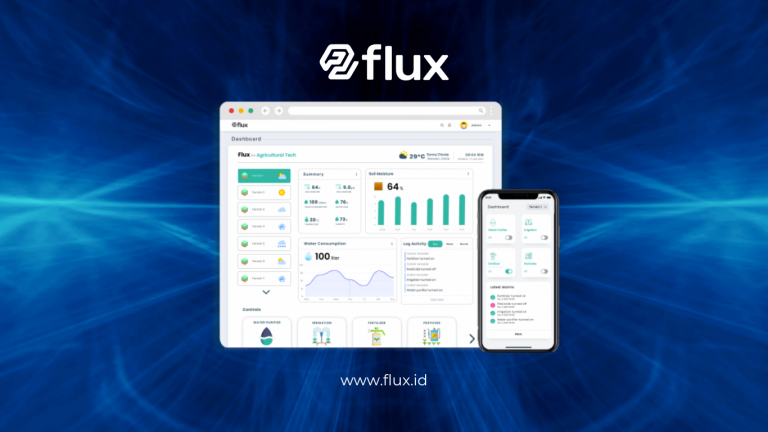Don't miss our holiday offer - 20% OFF!
In an era of rapidly evolving technology, particularly in the context of the Internet of Things (IoT), the ability to efficiently monitor and manage devices has become increasingly essential. Flux, as one of the leading platforms in IoT solutions, offers two main products: FluxConnect and FluxTrack. These two systems are designed to enhance efficiency and effectiveness in device management, providing organizations with the right tools to face modern industrial challenges. This article will explore FluxConnect and FluxTrack in greater detail, how they work, the benefits they offer, and their applications across various sectors.
Contents
What Are FluxConnect and FluxTrack?

Definition of FluxConnect
FluxConnect is a solution designed to connect various IoT devices within a single integrated platform. With FluxConnect, users can monitor and control devices in real-time. This system simplifies data management and communication between devices, facilitating more efficient workflows.
Definition of FluxTrack
FluxTrack is a platform focused on tracking and analyzing data from connected devices. With FluxTrack, organizations can gain in-depth insights into the performance of their devices, including usage analysis, active status, and compliance with established standards.
How Do FluxConnect and FluxTrack Work?

1. Data Collection
FluxConnect starts by collecting data from connected devices. Each device integrated with this system sends highly accurate and up-to-date information about its status and performance.
2. Real-Time Data Processing
The collected data is processed in real-time. Users can access this information anytime through a user-friendly application, enabling quick and accurate decision-making.
3. In-Depth Analysis
With FluxTrack, the information collected is analyzed to provide valuable insights. Users can see usage trends, detect issues before they become more serious, and plan for necessary maintenance or device replacements.
Benefits of FluxConnect and FluxTrack

1. Improved Operational Efficiency
Both FluxConnect and FluxTrack work together to enhance operational efficiency. By monitoring all devices on a single platform, organizations can quickly identify bottlenecks in processes and take necessary steps to optimize them.
2. Better Decision-Making
Accurate and up-to-date data allow management to make more informed, data-driven decisions. By understanding device conditions and performance, organizations can respond more effectively to market changes and challenges.
3. Flexibility and Scalability
Flux provides solutions that can be customized to meet the specific needs of each industry. This flexibility allows companies to adapt the implementation of Flux to their growth and evolving requirements.
4. Enhanced Security
Data security is a top priority. With the integrated system, FluxConnect and FluxTrack ensure that all data collected from devices is safeguarded against risks and cyber threats, maintaining data integrity and user trust.
Applications of FluxConnect and FluxTrack Across Various Sectors

1. Manufacturing Sector
In the manufacturing sector, FluxConnect and FluxTrack are invaluable for monitoring machines and production processes. With real-time monitoring, companies can minimize downtime and maximize output, keeping production processes efficient.
2. Energy Sector
In the energy industry, Flux assists in monitoring energy consumption and managing resources more effectively. With real-time information, companies can ensure compliance with environmental regulations and achieve energy savings.
3. Healthcare Sector
In healthcare services, both systems facilitate the monitoring of medical equipment and management of patient records. With Flux in place, healthcare institutions can deliver better services that are responsive to patient needs.
4. Transportation Sector
FluxConnect simplifies fleet management by providing tools for vehicle tracking and route optimization. This helps reduce operational costs and improve vehicle utilization efficiency.
Best Practices for Implementing FluxConnect and FluxTrack

1. Clear Implementation Plan
Creating a detailed and structured implementation plan before using FluxConnect and FluxTrack is crucial. This plan should include a comprehensive needs analysis and objectives to achieve.
2. User Education
Providing adequate training for users is essential to ensure they can effectively use both systems. Training programs should cover how to use the platform and provide an understanding of the available features and benefits.
3. Customization of Solutions
Tailor the Flux solutions to the specific needs of your company. Proper customization can enhance user experience and process efficiency.
4. Routine Monitoring and Evaluation
Conduct regular evaluations to ensure that the systems are functioning properly and can be adjusted as necessary. Monitoring also helps diagnose issues early on.
Conclusion
FluxConnect and FluxTrack from Nocola are intelligent solutions that support efficient management of IoT devices across various sectors. By facilitating integration and real-time data analysis, these platforms provide significant advantages for companies in improving productivity and operational effectiveness.
Investing in technology solutions like Flux is a critical step to remain competitive in the increasingly interconnected era of Industry 4.0. Let us harness technology as a driving force for business success and industrial sustainability, creating a better future!





